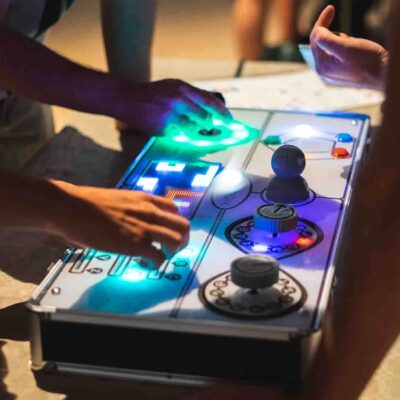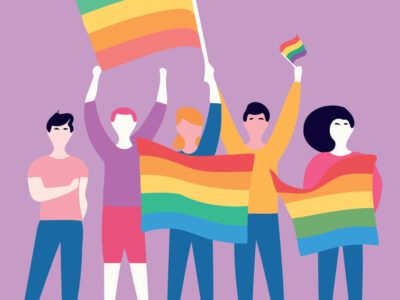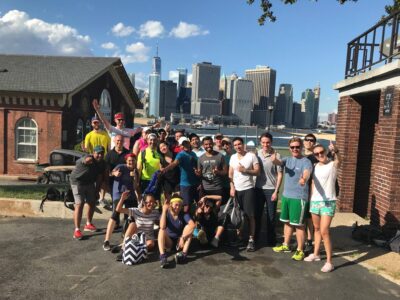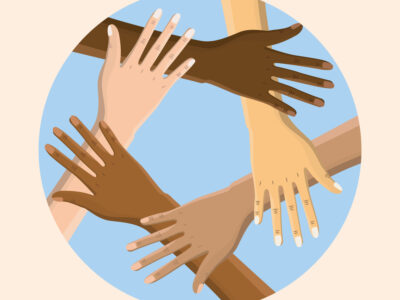Office distractions have long been an issue when it comes to work. Whether it’s a casual conversation, social media, smartphones, or the temperature of the room, we all get distracted from time to time. While distractions in the workplace are an inevitability, they come with downsides. Distractions decrease productivity and efficiency, limiting employees’ ability to perform at the highest levels possible.
Today, we’re going to analyze common workplace distractions and explain how to handle them. We’ll cover why limiting distractions is important, common workplace distractions, and how to eliminate distractions from in-person and digital workplaces.
Why is it Important to Limit Office Distractions?
First things first—why exactly are distractions in the office a problem? While that might seem like an obvious question to some, some may see distractions as an inevitable part of work and a way to break up the day.
Possibly the most important issue with distractions is that distracted workers don’t perform as well. They aren’t as engaged, motivated, or productive. If you want to increase productivity like most workplaces, then distractions are a problem.
Another problem with distractions is that they lead to frustration and stress. If you keep getting distracted from a project or task and are continually unable to focus and complete it, that can quickly get frustrating. They also can have an impact on mental health. Frustration and stress harm your wellbeing. On top of that, distractions such as phones can make it more difficult to have a healthy work-life balance—which also negatively impacts wellbeing.
Also, office distractions may end up contributing to other negative behaviors such as coffee badging, toxicity, siloing, and more. As employees become less engaged and proactive, those behaviors can slowly creep up.

Types of Distractions in the Office
Though this isn’t a topic many think about, there are different types of distractions in the office. These types have different causes and different solutions, so it’s important to be aware of them both and understand what they are.
Before explaining the different types, keep in mind that neither is better or worse than the other. They are both distractions that can have negative effects on employees, teams, and the workplace as a whole.
Internal Distractions
As the name implies, internal distractions are distractions that come from within. These distractions aren’t caused by things in the workplace; they are rooted within individual employees.
For example, say an employee is currently in the process of moving. They’re constantly thinking about packing their stuff, moving, what the neighborhood will be like, closing on the house, etc. Those thoughts come up at work, and they get distracted.
Internal distractions can be over anything—overwhelming work, tasks at home, an anticipated upcoming event, daydreaming, boredom, and anything else that might distract an employee. Because of their nature, these distractions are harder to deal with. Employees have to deal with these distractions on their own, though that doesn’t mean employers can’t help (which we’ll get to in just a bit).
External Distractions
The other type of office distraction is external distractions. As you can guess, these are distractions that come from the workplace and working environment. Employees may be engaged and ready to work, but things in the office distract them and cause them to lose focus.
Common external distractions include things like noise (from employees or equipment), fluorescent lights, colleague interruptions, work-related notifications, visual clutter, and environmental conditions like temperature.
In general, external distractions tend to be easier to address. If an employee is struggling to keep focused because of a flickering light, you can easily replace the flickering light. That said, these distractions still often pose a problem in the workplace.
Common Workplace Distractions
Before we look at ways to eliminate office distractions, it’s important to be familiar with some of the most common workplace distractions. This will help you more quickly identify and deal with distractions as they arise.
Social Media – This is one of the most common distractions, even among older workers who use Facebook more often than other platforms.
Smartphones – Personal tech like smartphones are another common distraction, especially amongst younger employees.
Small Talk/Gossip – While casual conversation in the workplace is good and helps build bonds, too much of it can be a distraction. Gossip in particular can quickly get toxic as well, which has its own negative effects.

How to Eliminate Distractions in the Workplace
With all the background covered, now it’s time to focus on how you can eliminate distractions at work. As mentioned earlier, different office distractions require different solutions. The list below should cover most distractions, but be sure to pick the right ones for your workplace.
Prioritize Wellness
One of the best ways to beat distractions and foster a winning team is by prioritizing wellness. Employees at their happiest and healthiest versions of themselves are less likely to be impacted by distractions.
Help employees prioritize get eight hours of sleep, eat nutritious foods, stay physically active, and have a healthy work-life balance. That will help them be less affected by distractions that arise. On top of that, employees perform better when they’re happy and healthy. Even if you aren’t dealing with distractions, it’s a good idea to prioritize employee wellness.
Encourage Time Blocking
Time blocking is another great way to deal with distractions. Time blocking is essentially blocking out time for uninterrupted work, allowing employees to focus and really get into their groove while working.
This is particularly effective for external distractions such as colleagues, work notifications, surprise meetings, etc. Employees can block out those distractions and focus strictly on their work.
It’s important for leaders to model this behavior, as it shows employees that blocking out time for uninterrupted work is acceptable. Leaders should also be clear that regular breaks are encouraged since they can help enhance focus.
Organize Your Workspace
Organizing and upgrading your workspace is another effective way to tackle office distractions, mainly those involving the work environment. Things like a cluttered office, flickering lights, or uncomfortable chairs can all be distracting but easily dealt with.
Innovative workspaces can not only eliminate workplace distractions, but they can also spark engagement, foster creativity, and encourage productive collaboration that helps employees be more productive. This can be as simple or complex as you want it to be. You can focus on specific distractions like clutter and lighting, or you can go all out and turn your workspace into a modern, innovative workspace that boosts productivity and creativity.

Ditch the Tech Distractions
While this might be obvious, ditching tech distractions is an incredibly effective way to limit office distractions. Muting or turning off phones (if possible), not going on social media, and not going on sites like YouTube can cut out some pretty big distractions.
That said, this is often easier said than done. In the modern world, many of us are addicted to our phones and social media, never going more than a couple of hours without checking in. Actually disconnecting can be a challenge.
However, it is possible and worth it. A good start is to have leaders and managers model this behavior. If they show that they can make it through the day without Facebook, Snapchat, and YouTube, it can empower employees to do the same.
Incentivize Employees
A less talked about but equally effective strategy for office distractions is incentivizing employees. Incentives are a reliable way to influence employees and direct their behavior, and they can work for distractions as well.
Employee incentive programs are a great way to show your employees how much you care about them and their efforts while helping them get more work done and avoid potential distractions. Outside of that, there are tons of employee incentive ideas you can consider using. Just remember to keep your employees in mind, as the best incentives are those that are tailored to specific employees and teams.
Plan Social Outings
Last but not least, social outings can be another way to handle distractions in the workplace. Though they may seem like a distraction in and of themselves, giving employees regular opportunities to socialize can keep distracting chit-chat to a minimum during dedicated work hours.
There are tons of options for social outings. Luncheons, happy hours, and team bonding events are all effective ways to give employees a chance to socialize. Team Mixology and Amazing Race are both fun events that can help limit office distractions.
Reward Employees’ Hard Work with TeamBonding
Distractions at work are common, and they affect everyone at some point. Whether it’s a chatty co-worker, a problem at home, social media, or an office that’s too hot, distractions limit our ability to focus and be productive, efficient, employees.
At TeamBonding, we have been helping businesses deal with office distractions for decades. We offer a wide range of team building activities that can help your team socialize while limiting distractions in the workplace. So don’t wait; get in touch with us today and reward your employees’ hard work with TeamBonding!














